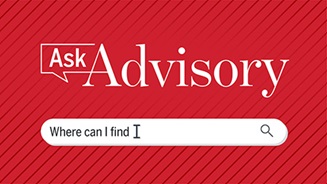Radio Advisory's Rae Woods sat down with Advisory Board's Natalie Trebes and Max Hakanson to break down what you need to know about the first few months of the second Trump administration, unpacking the implications of proposed payment cuts, the new era of public health, and uncertainty surrounding business planning.
Below is a summary of key ideas from the interview. To hear the full conversation, download the episode.
Executive actions and legislative changes
Woods highlighted the overwhelming nature of the current healthcare policy environment, noting that healthcare leaders are facing confusion because of the "flood the zone" strategy employed by the Trump administration.
Trebes categorized these changes into three main areas: executive action, legislative action, and judicial action. She emphasized that the bulk of the changes have come through executive orders, which have prompted numerous lawsuits from affected industries.
Hakanson added that the pace of these changes is unprecedented, even compared to the first Trump administration.
"Historically, we have not seen things like this," Hakanson said. "In Trump's first administration, things were moving quickly, but not nearly this quickly. We're seeing a lot more stuff thrown at us at once."
This rapid pace has created a chaotic and unpredictable environment for healthcare leaders.
3 key areas of impact
Trebes outlined three main areas of impact that healthcare professionals should focus on:
1. Healthcare coverage cuts
The most pressing concern for healthcare leaders is the potential cuts to government-funded health insurance payments, particularly Medicare and Medicaid.
Woods noted that discussions around these programs are dominating conversations with health leaders, and Trebes explained that the House and Senate are both working on different approaches to fund President Trump's priorities, which include tax cuts and increased defense spending. Trebes also highlighted the political challenges of cutting Medicare due to its voter base and industry backbone, making Medicaid a more likely target for cuts.
Trebes said the number one change that healthcare professionals should prepare for is the reintroduction of Medicaid work requirements, as it will lead to a drop in Medicaid enrollment. While most able-bodied adults on Medicaid are already working, the bureaucratic hurdles to prove employment will result in many losing coverage, Trebes said.
ADVISORY BOARD'S POLICY-RELATED resources
- Elections results are in: What healthcare leaders need to know
- How could Trump’s new tariffs impact healthcare?
- Thousands laid off at HHS: What you need to know
- RFK Jr. wants to change how Medicare pays doctors
- Health policy roundup: The latest on measles, abortion, and gender-affirming care
- Health policy roundup: Trump signs executive order on price transparency
- How federalism will shape health policy in 2025
Hakanson estimated that between 4 million and 5 million adults could lose coverage due to the reintroduction of Medicaid work requirements.
These potential cuts will have profound implications for healthcare businesses. Hakanson noted that health plans will face challenges in maintaining eligibility for beneficiaries, leading to fewer insured patients and increased costs for hospitals due to uninsured patients.
Trebes added that changes to uncompensated care payments and lower reimbursement rates will further strain healthcare providers.
2. Public health and patient engagement
The second category involves the clinical day-to-day setting and broader public health issues. Trebes discussed the implications of misinformation, management of outbreaks, and the infrastructure for public health. Trebes also emphasized the importance of trust in healthcare and the clinician-patient relationship, which are critical for managing population health effectively.
Trebes noted the disruption of federal operations and the confusion caused by executive orders, particularly those related to diversity, equity, and inclusion, adding that the availability of critical public health data has been affected, making it harder for researchers and clinicians to access reliable information.
Woods added that funding cuts for research on terms deemed as red flags, such as "women," are exacerbating the chaos.
3. Business environment for healthcare organizations
The third category focuses on strategic planning and economic outlook for healthcare organizations.
Trebes mentioned that tariffs, NIH funding, and the general direction of the healthcare industry will be key factors that shape the future business environment. Trebes advised healthcare leaders to pace themselves and engage in scenario planning and relationship building with local and federal representatives to navigate these changes effectively.
Trebes also emphasized the importance of healthcare leaders being candid with their staff. "Your [staff] are hearing a lot of scary things constantly," Trebes said. "And so figuring out how to be transparent and honest and real with [them] and recognizing that it's a scary time without scaring them too much is really important and I think goes a long way."
Hakanson underscored the need for nimbleness and the ability to pivot quickly in response to rapid changes.
"We talked a lot about uncertainty today. How do you respond to that?" Hakanson said. "Nimbleness is probably the easy answer, obviously much easier said than done. But being able to pivot ... very rapidly is going to be even more crucial than ever, given the speed that all of these changes are happening. So staying up to date, listening to Radio Advisory, following Advisory Board materials, and then being ready to act very quickly."
Don't miss out on the latest Advisory Board insights
Create your free account to access 1 resource, including the latest research and webinars.
Want access without creating an account?
You have 1 free members-only resource remaining this month.
1 free members-only resources remaining
1 free members-only resources remaining
You've reached your limit of free insights
Become a member to access all of Advisory Board's resources, events, and experts
Never miss out on the latest innovative health care content tailored to you.
Benefits include:
You've reached your limit of free insights
Become a member to access all of Advisory Board's resources, events, and experts
Never miss out on the latest innovative health care content tailored to you.
Benefits include:
This content is available through your Curated Research partnership with Advisory Board. Click on ‘view this resource’ to read the full piece
Email ask@advisory.com to learn more
Click on ‘Become a Member’ to learn about the benefits of a Full-Access partnership with Advisory Board
Never miss out on the latest innovative health care content tailored to you.



